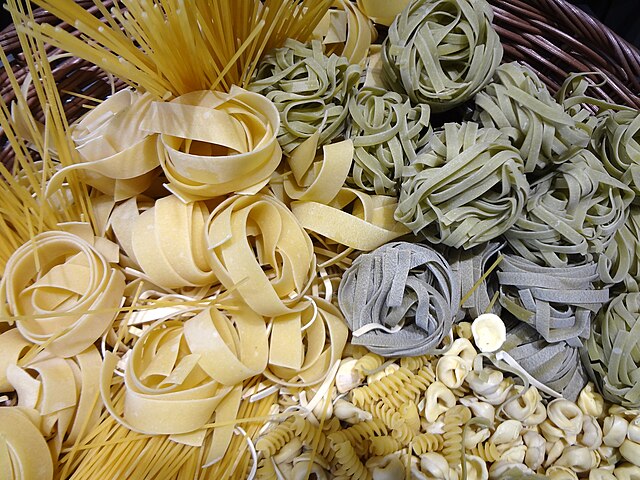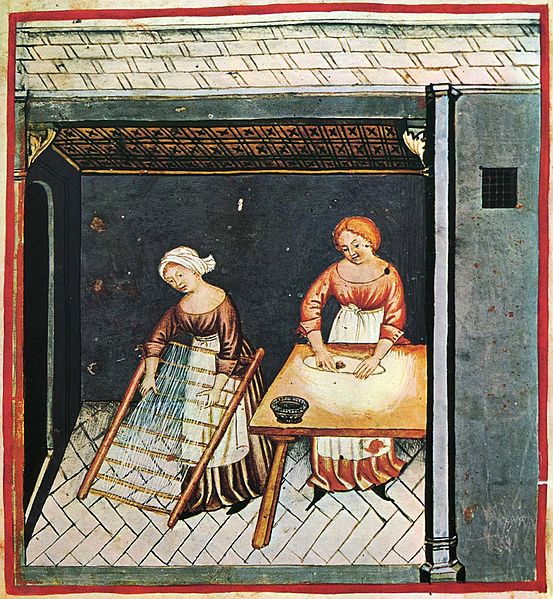Spaghetti is a long, thin, solid, cylindrical pasta. It is a staple food of traditional Italian cuisine. Like other pasta, spaghetti is made of milled wheat, water, and sometimes enriched with vitamins and minerals. Italian spaghetti is typically made from durum-wheat semolina. Usually the pasta is white because refined flour is used, but whole wheat flour may be added. Spaghettoni is a thicker form of spaghetti, while spaghettini is a thinner form. Capellini is a very thin spaghetti, while vermicelli refers to intermediate widths, varying between the United States and Italy.
Spaghetti hung to dry
Fresh spaghetti being prepared using a pasta machine
A hydraulic press with an automatic spreader by the Consolidated Macaroni Machine Corporation, Brooklyn, New York. This machine was the first to spread long cut alimentary paste products onto a drying stick.
An industrial dryer for spaghetti or other long goods pasta products, also by the Consolidated Macaroni Machine Corporation
Pasta is a type of food typically made from an unleavened dough of wheat flour mixed with water or eggs, and formed into sheets or other shapes, then cooked by boiling or baking. Pasta was traditionally only made with durum, although the definition has been expanded to include alternatives for a gluten-free diet, such as rice flour, or legumes such as beans or lentils. While Asian noodles are believed to have originated in China, pasta is believed to have independently originated in Italy and is a staple food of Italian cuisine, with evidence of Etruscans making pasta as early as 400 BCE in Italy.
A collection of different pasta varieties
Making pasta; illustration from the 15th century edition of Tacuinum Sanitatis, a Latin translation of the Arabic work Taqwīm al-sihha by Ibn Butlan
Boy with Spaghetti by Julius Moser, c. 1808
Typical products shop in Naples, Italy, with pasta on display








